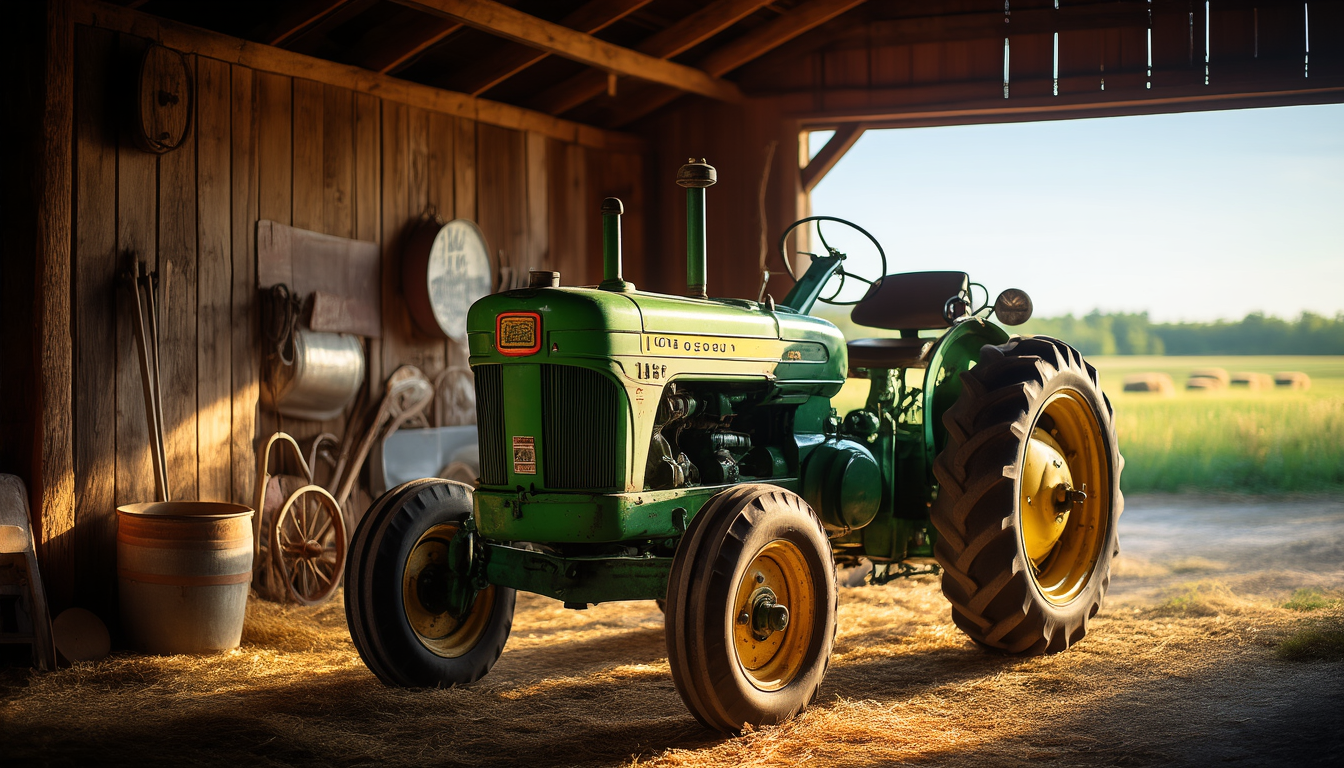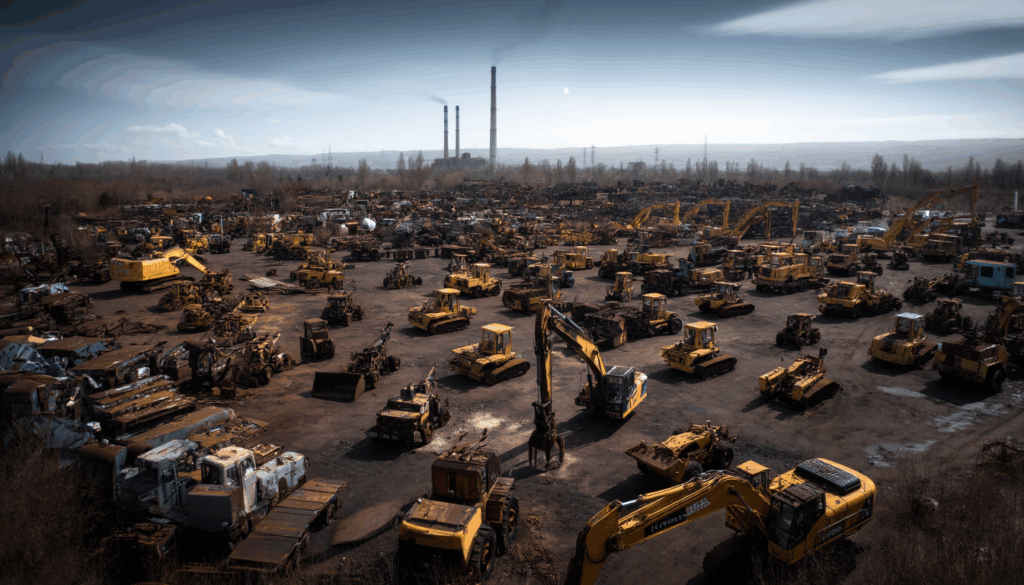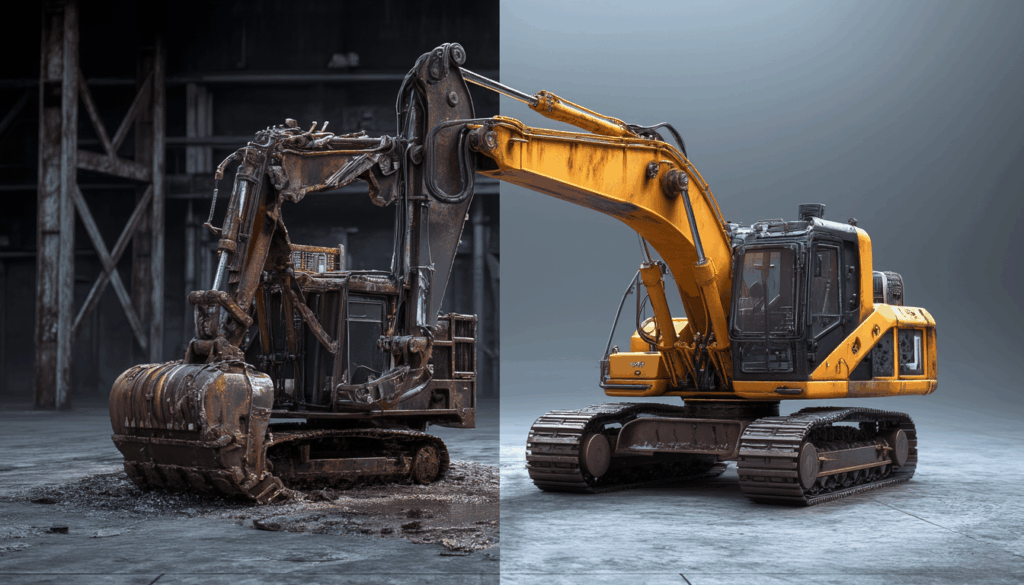Is Your “Broken” Equipment Actually a Hidden Goldmine? You’d Be Surprised!
Is your broken equipment gathering dust, taking up valuable space, and feeling like a financial drain? Many business owners and individuals automatically assume that once industrial machinery, construction vehicles, or farm equipment breaks down, its only destiny is the scrap heap. But what if we told you that your seemingly worthless, non-running equipment could still hold significant value? You might be surprised to learn that even heavily damaged or inoperable items can be a hidden goldmine, offering unexpected returns through parts, materials, or even refurbishment. Don’t let that damaged machinery become a forgotten asset – it’s time to explore its true potential.
Don’t Scrap It Yet! The Hidden Value of Non-Running Equipment How to Sell Non-Running Equipment:
Before you call the junkyard, consider the inherent value still present in your broken equipment. The reality is, even when an entire machine fails, many of its individual components, raw materials, and structural elements often remain perfectly usable or highly salvageable. This is particularly true for heavy-duty items like excavators, tractors, or manufacturing presses.
What Makes Your Damaged or Broken Equipment Valuable to Buyers?
Even if your equipment is no longer functional, it can still hold value in several key areas:
Parts Reclamation: Many components, such as engines (even if needing repair), hydraulic cylinders, electrical systems, tires, or specialized attachments, can be salvaged and resold individually. These parts are often in high demand, especially for older or discontinued models where new parts are scarce and expensive.
Scrap Metal & Raw Materials: Large machinery contains significant amounts of valuable metals like steel, copper, and aluminum. While often considered a last resort, selling for scrap can still provide a decent return, especially for very old or irreparable items.
Refurbishment Potential: Sometimes, what appears to be a major breakdown is a relatively minor fix for an experienced mechanic. Even if you’re not planning to refurbish it yourself, a buyer might see the potential for a profitable repair and be willing to pay more than scrap value. This is especially true for equipment needing repair that has a high market value when operational.
Collector’s Items or Niche Markets: Believe it or not, some older or unique pieces of broken equipment might be sought after by collectors, restorers, or hobbyists looking for specific models or historical items.
Pro Tip: Always get a professional assessment of your broken equipment’s condition. What looks like a total loss to you might be a simple fix or a treasure trove of valuable parts to someone else.
Maximizing Returns on Broken Equipment: How to Sell Selling Your Damaged Machinery
Selling damaged machinery might seem daunting, but with the right approach, you can turn a perceived liability into a significant asset.
Options for Selling Your Broken Equipment
There are several avenues to explore when looking to offload your non-functional assets:
Parts Dealers & Salvage Yards: Many businesses specialize in buying broken equipment specifically for parts. They have the expertise to dismantle, test, and resell individual components.
Online Marketplaces & Auctions: Websites like eBay, Ritchie Bros. Auctioneers, or local industrial auction sites are excellent platforms to list non-running equipment. Be sure to provide detailed descriptions, clear photos, and specify the condition (e.g., “for parts only,” “needs engine repair”).
Specialized Equipment Brokers: These brokers connect sellers with buyers looking for specific types of equipment, including those in need of repair. They often have a network of contacts interested in refurbishment projects.
Direct to End-Users (with Transparency): Sometimes, smaller businesses or individuals with mechanical skills are looking for project equipment they can fix themselves. Listing locally on platforms like Craigslist or Facebook Marketplace can reach these buyers. Just be completely transparent about the equipment’s condition and what’s known to be broken.
Example: A non-running John Deere tractor from the 1980s might be worthless to a modern farm, but a hobby farmer or restorer might pay a premium for it, knowing they can source parts and bring it back to life.
Frequently Asked Questions About
Absolutely! Many buyers are specifically looking for non-running equipment to dismantle for parts, scrap for valuable metals, or to refurbish themselves. Transparency about its condition is key.
Research similar models sold for parts or repair, get quotes from specialized salvage yards, or consult with equipment appraisers who understand the value of components and raw materials.
Clean it as much as possible, photograph all angles (including damaged areas), list all known issues, and gather any available maintenance records. The more information you provide, the better.
It depends on the repair cost versus the increase in market value. For minor fixes, it might be worthwhile. For major overhauls, it’s often more cost-effective to sell “as is” to a buyer who specializes in repairs.
Don’t Let Your Broken Equipment Go to Waste!
The misconception that broken equipment is nothing more than junk can cost you money. By understanding the various ways it retains value—from its component parts to its potential for refurbishment—you can transform a perceived burden into a profitable opportunity. Don’t let your non-running equipment continue to sit idly; explore your options and unlock its hidden worth.
Ready to turn your damaged machinery into cash? Get a free valuation today and discover the surprising value still left in your equipment!
Get Instant Cash Offers for Your Broken Equipment
Don’t wait—turn your damaged machinery into profit today. Request a free equipment valuation and unlock its true value now.



